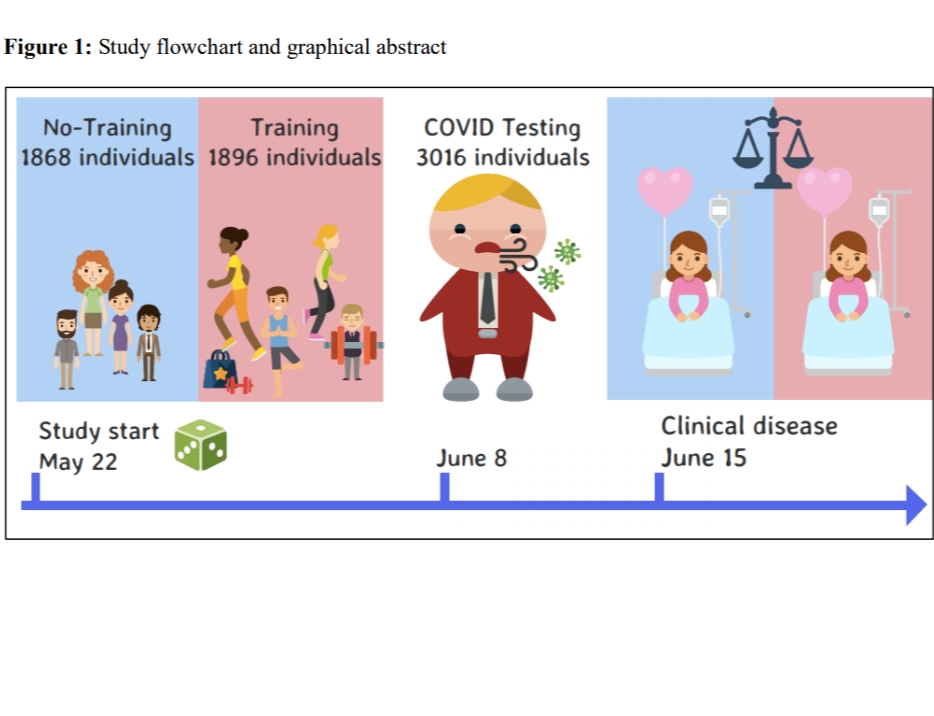TRAiN study group,
Michael Bretthauer medRxiv June 25, 2020.
Background: Most countries closed training facilities during the COVID-19 pandemic. This may have negative consequences for peoples health and wellbeing. We investigated SARS-CoV-2 virus transmission and COVID-19 disease attributable to training facilities.
Methods: we randomized members 18 to 64 years with no COVID-19 relevant comorbidities at five training facilities in Oslo, Norway to access or no access to their facility. Facilities were opened from May 22, 2020 for individuals randomized to training, applying increased social distancing (1 meter for floor exercise, 2 meters for high-intensity classes), enhanced hand and surface hygiene. Locker rooms were open, showers and saunas were closed. We compared SARS-CoV-2 PCR status by self-administered naso-, oropharyngeal and sputum sampling after two weeks and clinical disease by linkage to electronic patient records after three weeks.
Results: 3,764 individuals were randomized and included in analyses; 1,896 in the training and 1,868 in no-training arms. In the training arm, 81.8 percent trained at least once at the facilities. Out of 3,016 individuals who returned the SARS-CoV-2 PCR tests, there was one positive test. The positive individual was randomized to training, but had not used the facility before testing day. Contact tracing revealed the workplace as transmission source. A total of 106 individuals had outpatient hospital visits, and six individuals were admitted to hospital during the three weeks after intervention start, with no differences between arms. There were no outpatient visits or hospital admissions due to COVID-19 in either group.
Conclusions: Provided good hygiene and social distancing measures, there was no increased COVID-19 spread at training facilities.














